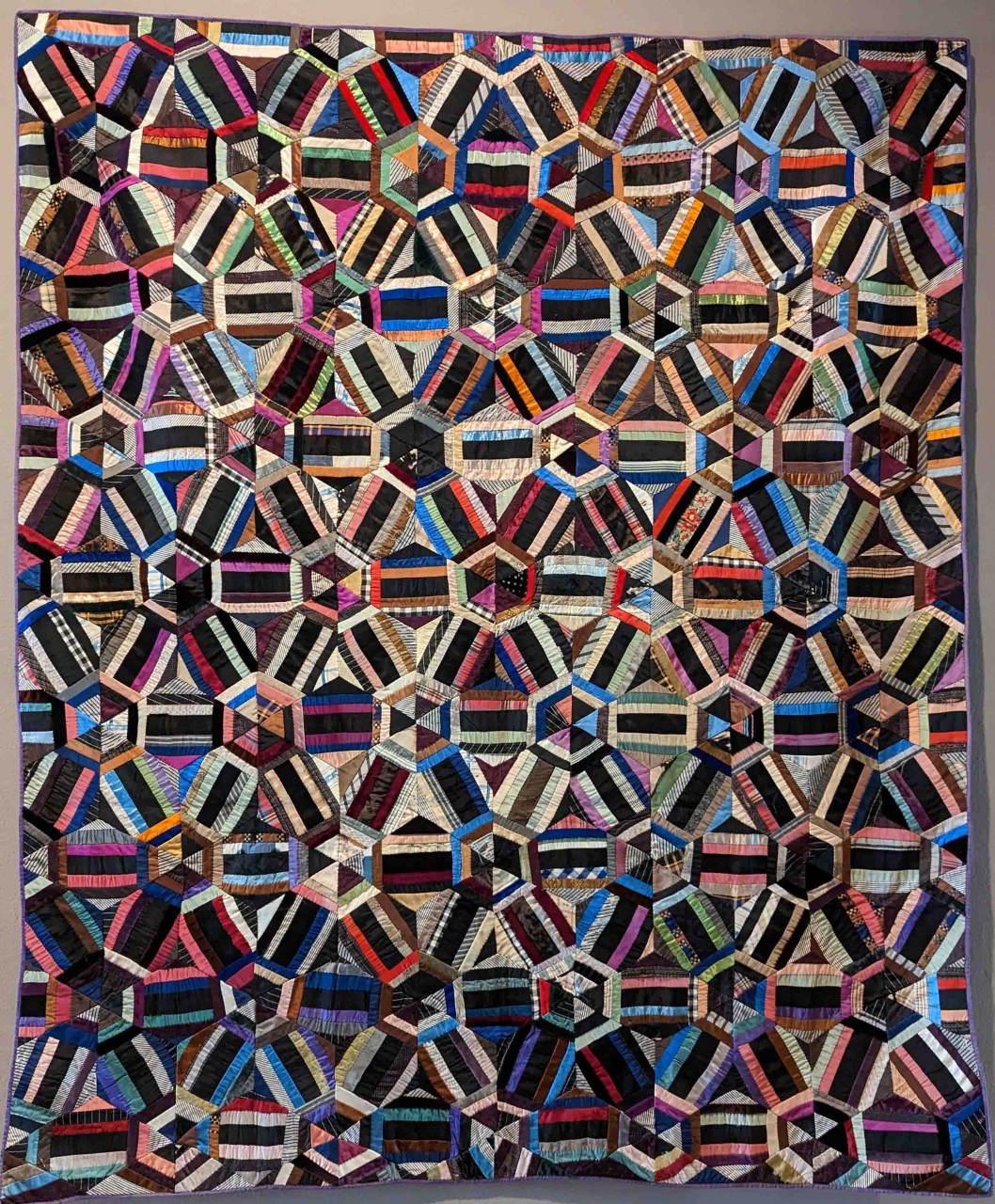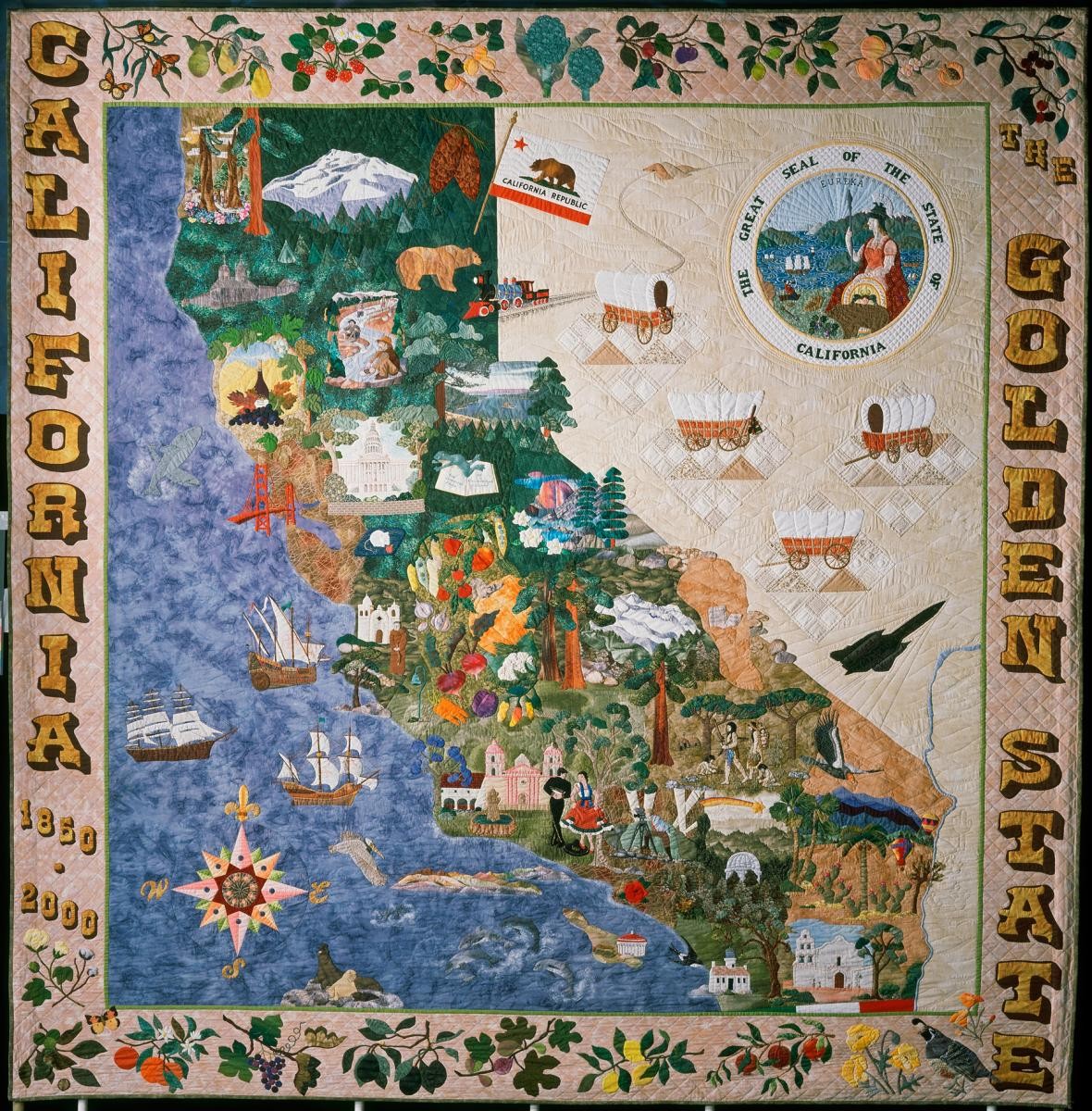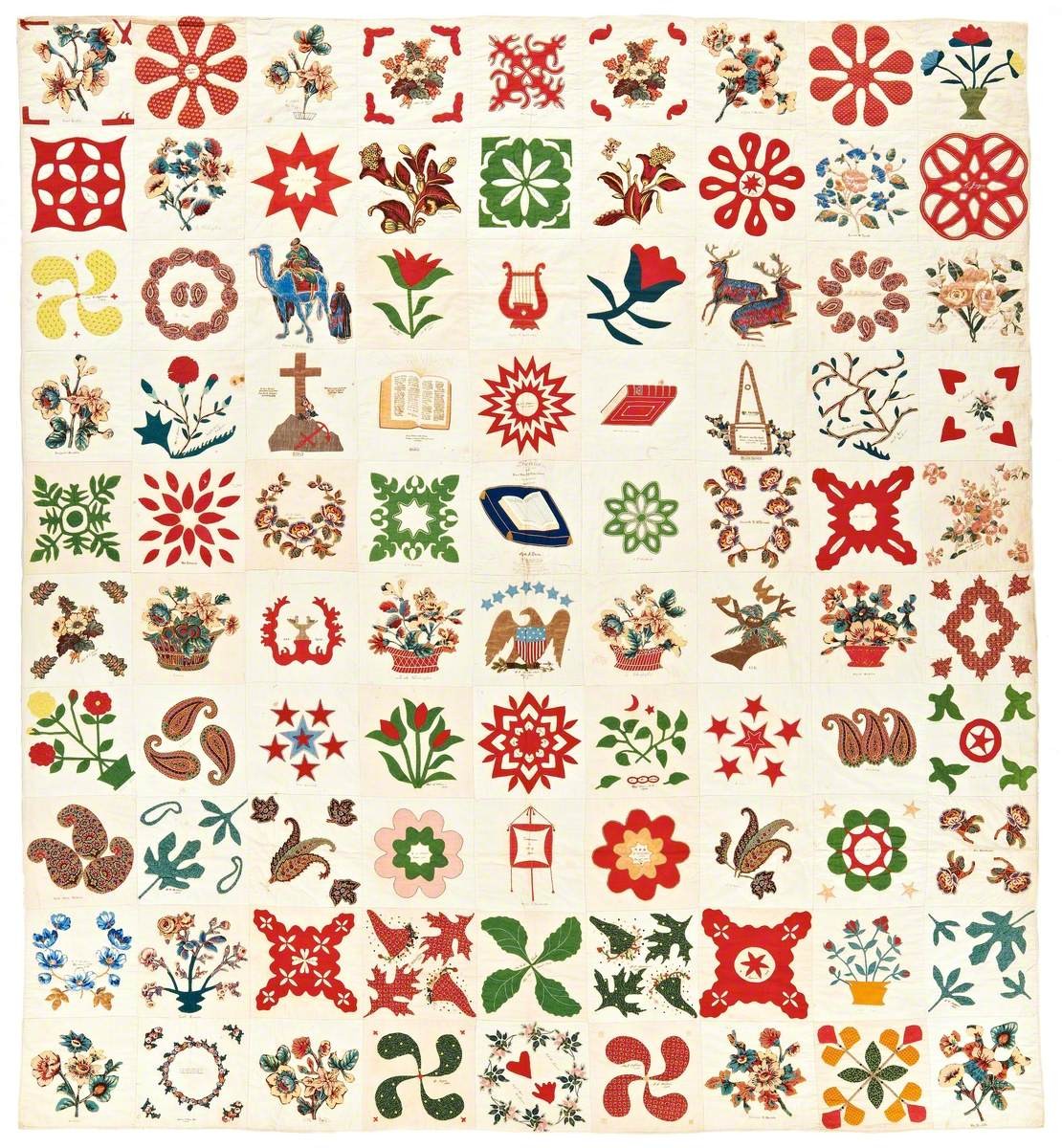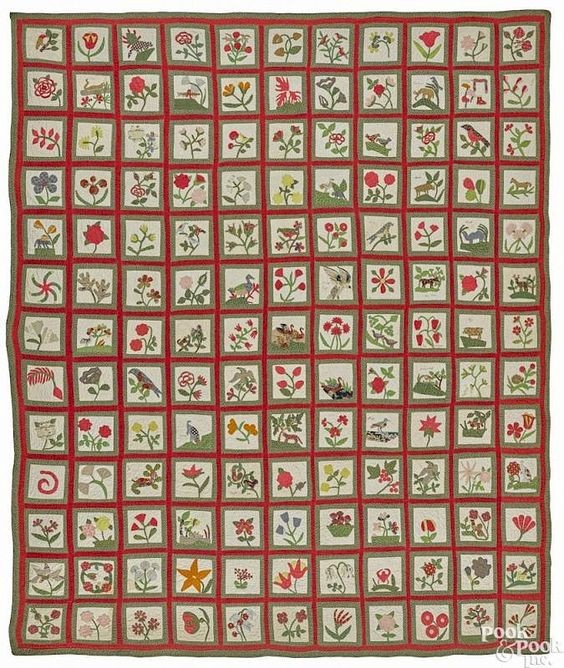
I recently attended a lecture given by Barbara Brackman at the MOKA Quilt study group on the links between Kentucky and Missouri quilts. Shortly after, I attended an exhibition curated by Leah Zieber and Arlene Stevens at the Pasadena Museum of History which featured a group of quilts made of fancy goods (silk, satin, and velvet.) It was wonderful to see the actual textiles, to see in person some of the lessons learned from Brackman’s and others’ research. Fancy Goods Quilts can be made in a typical pattern such as log cabin or in a disorganized collection of shapes known as a crazy quilt. Crazy quilts frequently have embroidered details, which some have commented, the quilter went crazy with all the embroidered designs. However, that may not have been the case. Instead, she may have simply...





